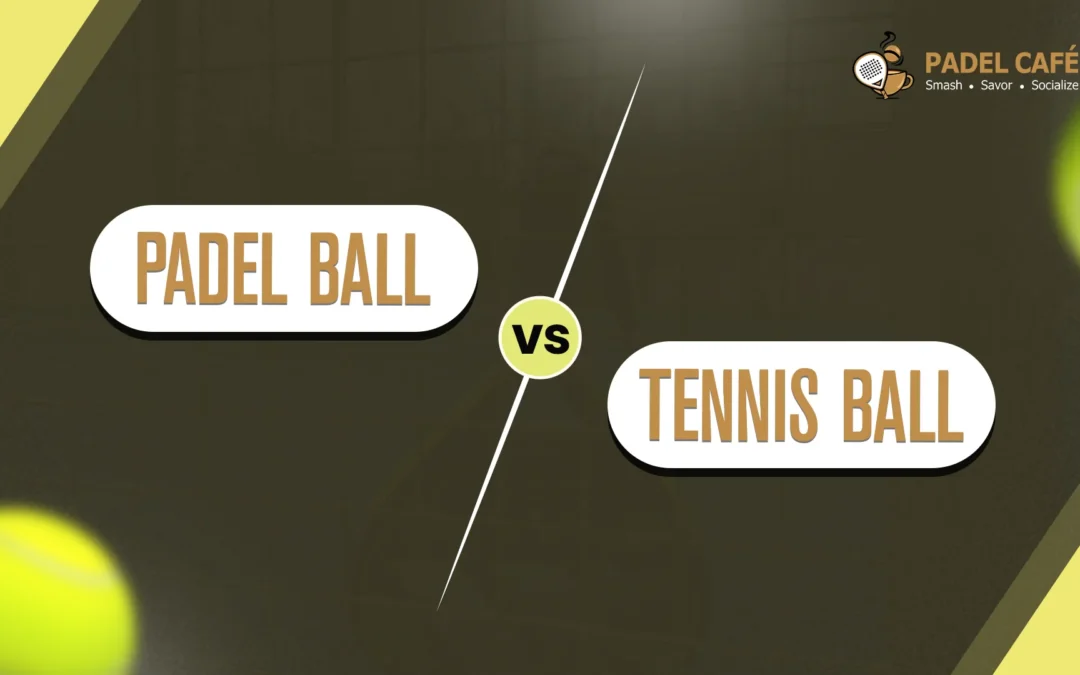For any racket-based game, a ball is a necessary element in the sport’s equipment (with the exception of badminton). And so, it is in the case of padel and tennis. Despite bearing differences in the gameplay, the two games are unplayable without a ball.
Although padel shares some similarities with tennis, it is a distinct sport with its own set of rules and court design. Likewise, the equipment used in the two sports also varies. This article focuses on the key differences between padel and tennis balls.
Key Differences Between a Padel and a Tennis Ball
Differentiating between the rackets of different sports is easy, given their visibly varying shape and structure. But it is not quite as easy when it comes to the balls. Both have a similar outlook, making it difficult to spot the necessary differences. People often use tennis balls for padel, too.
While it’s all about the game that’s played on the court, you do want to ensure that you’re using the correct gear for the sport. So, let’s keenly observe the two ball types and see what sets them apart.
1. Ball Size (Diameter)
Despite their almost identical appearance, the balls of the two sports vary in size. Tennis balls are slightly larger than padel balls. Professional and regular players are well able to notice this difference based on their familiarity with the game’s rules and equipment. The ball size range in the latter game is slightly smaller than the balls of the former sport.
- Tennis ball size: 2.575 inches (6.5cm) to 2.700 inches (6.85cm) in diameter.
- Padel ball size: 2.5 inches (6.35cm) to 2.66 inches (6.77cm).
This slight difference suggests why people often use tennis balls for padel sport.
2. Internal Pressure
The next significant difference between the two types of balls is their internal pressure. By definition, it’s the pressure of the air inside the ball on its inner lining. It declines as the ball is used for the gameplay.
Now, due to a size difference, the balls’ internal pressure also varies.
- Tennis: The balls are slightly more pressurized, having an internal pressure of 14psi, in line with the regulations set by the International Tennis Federation (ITF).
- Padel: The balls used in this game have a slightly low internal pressure, measuring between 10psi and 11psi, as determined by the World Padel Tour.
The values are measured as of the new balls, and as stated, the pressure declines based on its use. So, it’s important to regularly change the balls to ensure a good match.
3. Ball Bounce and Rebound
This one is an interesting difference, noticeable only as you start playing the game. Generally speaking, the greater the internal pressure, the higher the bounce. And this gives us an understanding of why the tennis balls exhibit a greater rebound.
- Tennis: Regulated by ITF, balls of this sport should bounce between 135 centimeters (53 inches) and 147 centimeters (58 inches). Moreover, for (fast) balls, the ball bounce should extend up to 135-151cm (53-60 inches).
- Padel: This game’s ball exhibits slightly less bounce than the previous one. The rebound that’s required of them measures between a height of 135 centimeters and 145 centimeters.
The Extra Elements
Apart from the above key differences, padel and tennis balls exhibit some commonalities. However, the differing gameplay is what brings a difference. These include:
4. Weight of the Ball
Balls of both padel and tennis exhibit the same weight.
- Tennis: The balls weigh between 1.975 ounces (56g) and 2.095 ounces (59.4g).
- Padel: According to the International Padel Federation, the balls used in this sport weigh between 56g and 59.4g.
It suggests that there’s no difference in the balls when it comes to their weight. However, one important thing to consider is the way a shot is played. Since both types of sports feature very different rackets, the way the (similar in weight) ball is hit makes the real difference.
5. Material
This is also another common feature between the two types of balls. However, the type of synthetic fiber used in felt can differ between the two games.
- Tennis: The sport’s ball has a rubber core with an exterior covered with felt.
- Padel: Like tennis, these balls come with a rubber core and felt-covered exterior.
Note: Felt is a material featuring a blend of natural (cotton, wool) and synthetic (nylon) fibers.
Padel Ball vs Tennis Ball: Quick Comparison
Here’s a quick comparison between the two types of balls, to give you a clear picture of their characteristics:
Feature | Padel Ball | Tennis Ball |
Diameter | 6.35 – 6.77 cm | 6.54 – 6.86 cm |
Bounce | 135 – 145 cm | 135 – 147 cm |
Pressure | 14 psi | 10 psi – 11 psi |
Weight | 56 – 59.4 grams | 56 – 59.4 grams |
Material | Rubber & Felt | Rubber & Felt |
Summing Up
Padel and tennis share some commonalities but are distinct games with their own identities. Along with differing sets of rules and court designs, the equipment used in each sport is also different.
In this article, we discuss how the balls used in both games vary despite having a nearly similar appearance. Undoubtedly, novices and beginners often use tennis balls when playing padel, but it’s important to choose the right padel gear as you progress to more advanced play in this latter sport.


